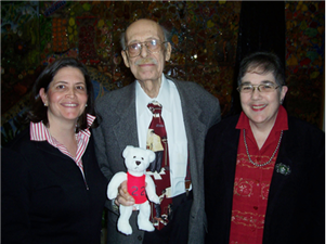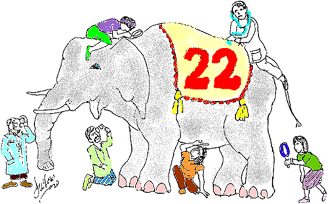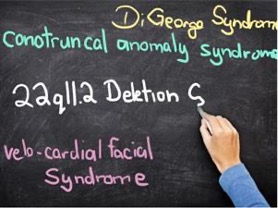22q11.2DS is a genetic condition that people are born with, but it is usually not inherited. It is a complex condition with many features, some of which are apparent at birth, while others develop later in life. This is the most common microdeletion syndrome, a type of genetic condition that has been known for around 20 years.
Source: NIH Genetics Home Reference
In the early 1990s, researchers found that deletions in the 22q11.2 chromosomal region are responsible for the collection of syndromes listed above. Now that the unifying cause is found, researchers are encouraging everyone (individuals with the syndrome, their family members, medical professionals) to use the name 22q11.2 Deletion Syndrome instead of the multiple descriptive but outdated names. This is the basis for the “Same Name Campaign”.
22q11.2DS stands for 22q11.2 deletion syndrome.
|
22 |
Chromosome 22 (the smallest of the human chromosomes, in every cell of the body) |
|
q |
The long arm of the chromosome |
|
11.2 |
The position on the chromosome – like the GPS coordinates |
|
Deletion |
A piece missing from one of the pair of chromosome 22 |
|
Syndrome |
A collection of features, formerly known by many names, including DiGeorge Syndrome and Velo-cardio-facial syndrome (VCFS) |
22q11.2DS was formerly known by many names, including DiGeorge Syndrome or Velo-cardio-facial syndrome (VCFS).
Content provided by: Dr. Anne Bassett
The illustration on the right shows the old adage of the nearsighted veterinarians trying to describe an elephant by each examining a separate part. So too was the case of the chromosome 22q11.2 deletion syndrome when reported by individual subspecialists concentrating on specific areas of expertise, for example, endocrinology, cardiology, and speech pathology. It was not until the development of FISH studies in the early 1990s that investigators were able to see the big picture and recognize that many previously described clinical conditions were actually caused by the 22q11.2 deletion.
Illustration and caption taken from the editorial of the Special Issue on 22q11.2DS of the American Journal of Medical Genetics, published on October 31st, 2018.



Discover the 22q11.2 Society by exploring our Advisors, Trustees, Research and Reviews pages. Gain insight into our organization’s foundation, objectives, research, and efforts.